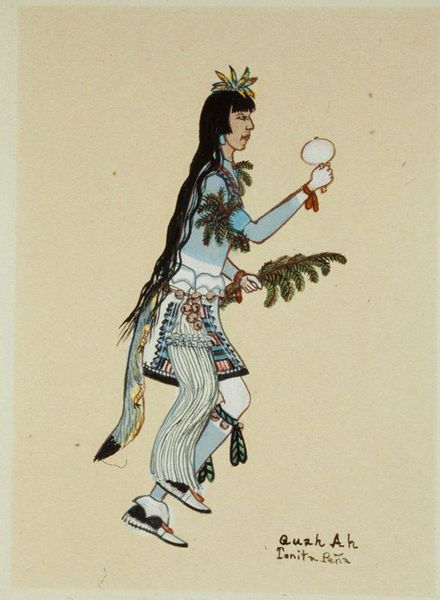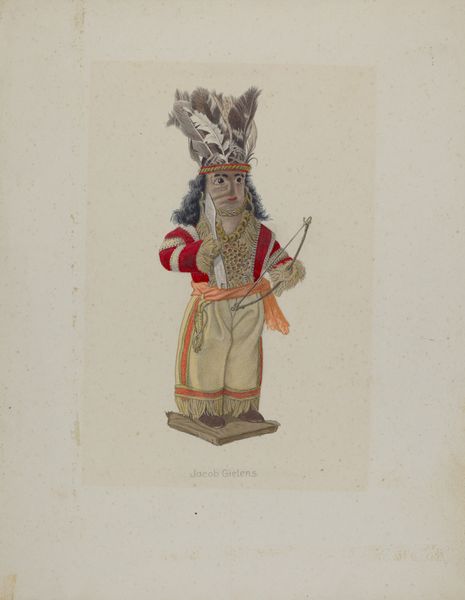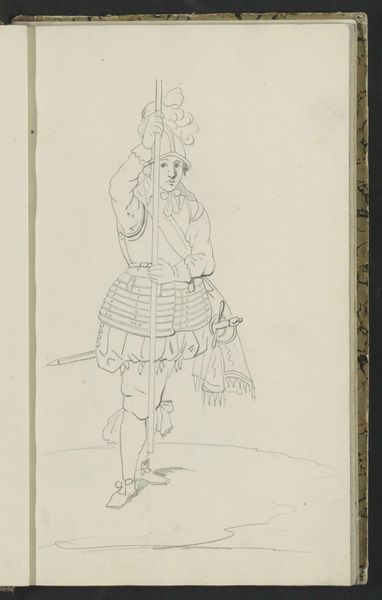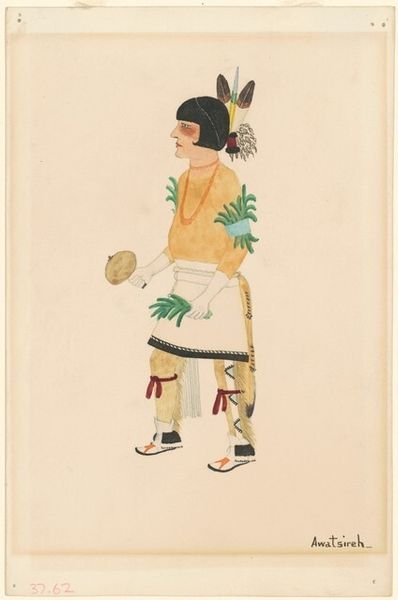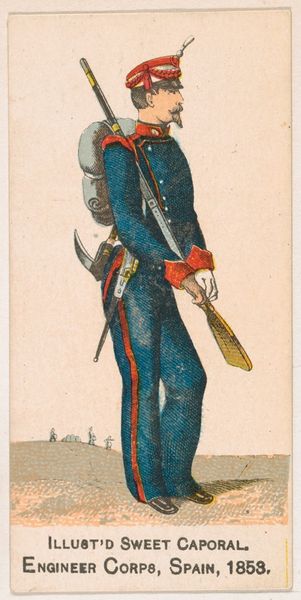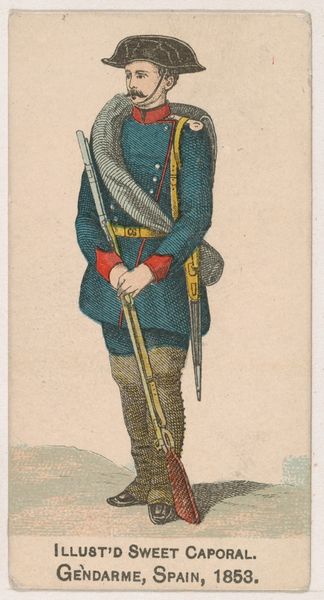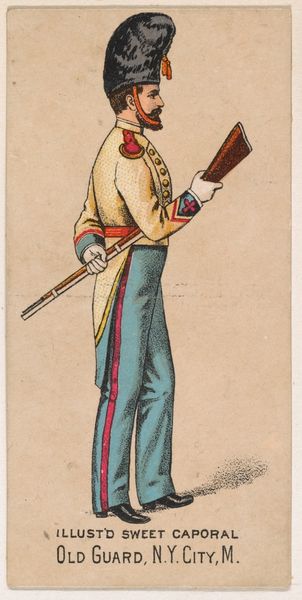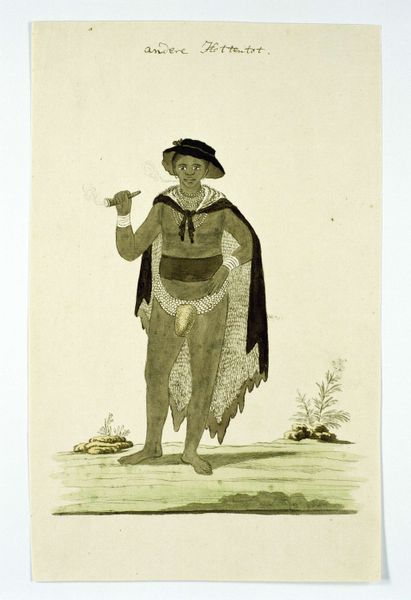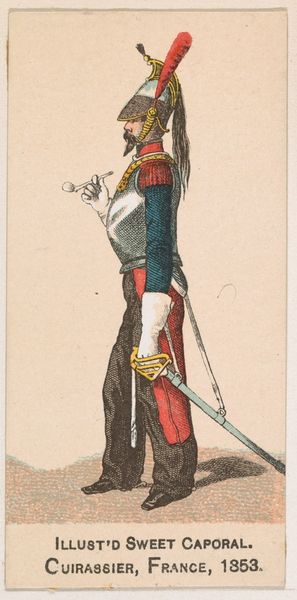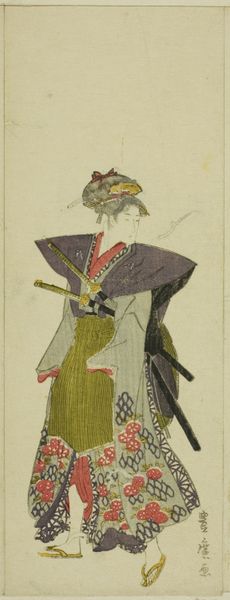
painting, gouache, paper
#
painting
#
gouache
#
figuration
#
paper
#
indigenous-americas
Dimensions: 6 1/8 x 4 3/8 in. (15.56 x 11.11 cm) (sheet)
Copyright: No Copyright - United States
Curator: Here we have "Corn Dance" by Tonita Peña, painted around the 20th century, using tempera and watercolor. It’s currently housed here at the Minneapolis Institute of Art. Editor: Immediately striking is the figure's stillness, her stance both poised and somehow fragile. The flat, almost shadowless presentation lends it a dreamlike quality. Curator: Peña’s work is known for this elegant simplicity. If we examine the planes of color and the controlled use of line, we see how she balances realism and stylistic reduction. The dancer's dress, rendered in nuanced shades, has a remarkable spatial depth when considered along with the flatness of her face. Editor: But that "simplicity" belies a deeper engagement with representation, doesn't it? Peña was one of the first Native American women to make a living as a painter, and she intentionally created work that both preserved and promoted Pueblo culture, documenting ceremonies during a time of significant cultural suppression. Curator: Exactly. The structure reinforces this cultural preservation. Look at the geometry of her headdress; it is both representational and subtly abstracted, a delicate equilibrium between depicting the sacred and protecting it. Editor: The muted palette, I think, contributes to the solemnity, making her practice all the more intriguing because it served as a form of cultural resistance and celebration. These paintings ensured that future generations could connect to and understand these vital traditions. Curator: It’s a powerful articulation. The economy of means underscores her command of visual language. Notice how she contrasts the geometric band across her middle with the delicate rendering of the feathered fans—the variance elevates the piece. Editor: Considering the broader scope, and her historical context, it becomes a symbol of Indigenous resilience and self-determination in art. She took representational sovereignty at a moment where the dominant narrative pushed against it. Curator: Precisely. There's a harmony of form and function that rewards close study. The way she utilizes positive and negative space pushes and pulls you around the figure. Editor: Her work is a reminder that aesthetics are never neutral; they're always charged with cultural and historical significance. Her compositions, while graceful, carry the weight of her community's struggles and triumphs. Curator: I leave feeling a stronger connection to modernism, indigenous identity, and formalism, which all unite. Editor: I come away with a renewed awareness that her individual journey, coupled with this potent visual language, provides vital social commentary.
Comments
No comments
Be the first to comment and join the conversation on the ultimate creative platform.
